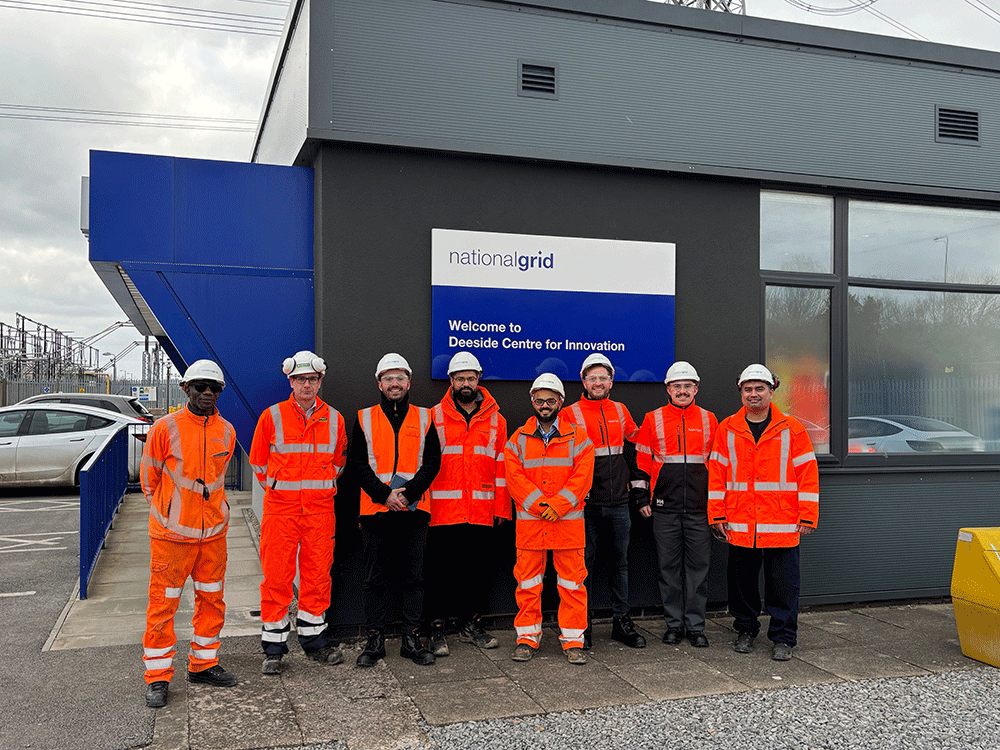11.08.2025 | Case story
Concrete is a versatile and useful material, but it is also responsible for about 8 % of the world’s CO2 emissions. Hyperion Robotics has developed a production technique that allows robots to print concrete, much like a 3D printer, drastically reducing emissions. With financial support from Nopef, Hyperion Robotics assessed the viability of implementing a pilot project with a local UK partner. Now the UK is the Finnish company’s largest export market.
Concrete is ubiquitous in construction, and as the world continues to urbanise, the demand for concrete is increasing. By one estimate, the world may produce 20 billion m3 of concrete annually by 2050, up from 14 billion m3 today. Concrete production is one of the largest contributors to greenhouse gas emissions and climate change, so it is essential to make the material more sustainable.
“Hyperion Robotics has developed an innovative 3D printing method that could greatly reduce the CO2 emissions from concrete,” says Vanessa Lorentzen, Investment Manager at Nefco. “This method also enables the use of recycled material in concrete production, supporting a circular economy.”
Concrete is used nearly everywhere in construction, meaning Hyperion’s technology could have a significant impact.
“Hyperion has something new to offer in industrial and infrastructure projects,” Lorentzen explains. “It saw the UK as an interesting market and approached Nopef for a feasibility study grant to prepare and assess the viability of implementing a pilot project together with a local partner. Hyperion wanted to study the market, identify the risks involved in a pilot project, identify potential suppliers and partners, examine certification procedures and finalise a project plan.”
New sustainable solutions for public infrastructure
“England and Wales have a new, five-year asset management plan that includes major investments in the water industry,” says Fernando De los Rios, CEO of Hyperion Robotics. “We believed our printed concrete solution could provide benefits across the board, being cheaper, faster, safer and more sustainable than conventional solutions.”
The feasibility study helped Hyperion meet potential partners and customers and learn more about the UK market. Some water companies in England and Wales were interested in testing the latest sustainable construction solutions and techniques. Following positive results from the feasibility study, Hyperion participated in a major pilot project in Esholt for Yorkshire Water.

Major benefits of printing concrete
One of Hyperion’s main focuses is drawpits, underground structures, typically about 5.2 m2, that house electrical and data cables.
“The benefit of 3D printing is that you can make structures of any shape,” De los Rios continues. “We worked with our partners, including the construction company Mott MacDonald Bentley (MMB), to design a round structure that met all their criteria for a drawpit. This design requires only half the material of traditional methods, reducing CO2 emissions by 40 per cent and costs by 30 per cent.”
The drawpits were printed at Hyperion’s factory in Finland and exported to the UK. The pilot project was designed and delivered in only two months, while the traditional process would normally take six months. Additionally, it is much safer for workers to manufacture the drawpits in the controlled conditions of a factory instead of constructing them on site. All targets for time, material and CO2 savings were met or exceeded.
Support for the first step towards internationalisation
“I really can’t praise Nopef enough,” De los Rios says. “Thanks to this project, we’ve gained multiple clients in the UK. MMB has re-ordered from us multiple times. Now we are expanding to print larger, water-retaining structures. I see a bright future ahead, not just in the UK but elsewhere in Europe and around the world.”
In June 2025, Hyperion partnered with the UK’s National Grid to 3D print low-carbon substations. Lorentzen is pleased with Hyperion’s success internationally.
“This is what Nopef is here for: supporting Nordic companies in taking the first step towards internationalisation. We want to provide incentives, resources and support for them to succeed,” she says.
Read more about Nopef – financial support for internationalisation
For more information, please contact:

